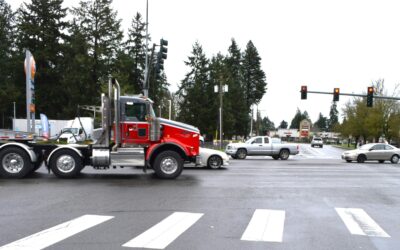Atlanta’s vibrant streets invite residents and visitors alike to walk, explore, and enjoy our city’s charm. Yet as pedestrian activity increases—especially during the warm summer months—so do accidents involving walkers and vehicles. A momentary lapse in driver attention or a poorly marked crosswalk can have devastating consequences for pedestrians. If you or a loved one has been struck while walking, understanding the immediate steps to take and your legal rights can make all the difference in recovering physically and financially.
1. Seek Immediate Medical Attention—No Exceptions
After a pedestrian collision, injuries can range from minor scrapes to life‑threatening trauma. Even if you believe your injuries are “just bruises,” always call 911 or go to the nearest emergency department. Internal injuries—concussions, internal bleeding, or fractures—may not be visible right away. Prompt medical evaluation accomplishes two critical goals:
- Protecting Your Health: Early diagnosis and treatment help prevent complications, reduce long‑term impairment, and accelerate recovery.
- Documenting Your Injuries: Medical records become indispensable evidence in any personal injury claim. A timeline showing when you first sought treatment establishes a direct link between the accident and your injuries.
2. Report the Accident and Secure a Police Report
Under Georgia law, any collision involving injury, death, or property damage must be reported to law enforcement (O.C.G.A. § 40‑6‑273). At the scene, cooperate with officers to ensure they record:
- The exact location (intersection, crosswalk, or roadway)
- Statements from drivers, pedestrians, and witnesses
- Any citations issued (for speeding, distracted driving, failure to yield, etc.)
Once officers complete the report, request a copy—either at the scene or by contacting the Atlanta Police Department’s Records Division later. This official document will detail the driver’s version of events, witness information, and citations, forming the foundation of your insurance claim or lawsuit.
3. Document Everything: Photos, Witnesses, and Scene Details
While roadside photos or videos cannot replace medical records, they powerfully illustrate the accident’s context:
- Photograph Road Conditions: Snap images of crosswalk markings, traffic signals, signage, and lighting. A faded crosswalk or malfunctioning pedestrian signal can strongly suggest municipal negligence.
- Record Vehicle Damage: Close‑up shots of dents, broken headlights, or deployed airbags help assess the collision’s force.
- Capture Visible Injuries: Document bruises, cuts, and swelling before they subside. These photographs supplement medical records by showing progression.
- Gather Witness Information: Ask bystanders or other pedestrians for names and phone numbers. A detailed witness statement can corroborate your account of being in a marked crosswalk or having the right of way.
Preserving these details early bolsters your claim, especially if the driver or city disputes fault later.
4. Understand Liability: Who Could Be at Fault?
Determining liability in a pedestrian crash often involves multiple parties:
- The Driver: A driver who fails to yield to a pedestrian in a marked crosswalk or exceeds the posted speed limit can be held liable. Georgia’s “Hands‑Free Law” (O.C.G.A. § 40‑6‑241) also prohibits drivers from using handheld devices—any distraction can translate into negligence.
- Municipalities or Private Property Owners: If poor street lighting, faded crosswalks, or unclear signage contributed to the accident, the City of Atlanta (or relevant county) may share liability under a “negligent maintenance” or “dangerous condition” theory. Time‑stamped photos of potholes, missing signs, or broken signals strengthen these claims.
- Pedestrian Behavior: Georgia recognizes comparative negligence (O.C.G.A. § 51‑12‑33), meaning if you stepped into traffic against a signal or outside a marked crosswalk, your compensation may be reduced by your percentage of fault. However, even if you bear some responsibility, you can still recover from the driver or other parties as long as you’re less than 50% at fault.
A qualified pedestrian accident attorney will investigate each potentially liable party, preserving evidence and building a comprehensive case to maximize your recovery.
5. Notify Your Insurance Company (Even If You’re a Pedestrian)
Often, pedestrians believe insurance only matters for drivers—but your own health insurance, auto MedPay endorsement, or PIP coverage can help cover immediate medical bills. Additionally, if the driver’s liability policy disputes fault, your insurer may advance payment under “insured medical payments” or PIP until fault is established. Inform:
- Your Auto Carrier (if covered): If you live in Georgia and carry PIP, it can pay up to policy limits for medical expenses, regardless of fault.
- Your Health Insurance Provider: They cover remaining medical bills not settled by PIP or liability carriers. Be aware of subrogation rights—your health insurer may seek reimbursement from the at‑fault party’s insurer.
- Driver’s Liability Insurer: Through a demand letter or formal claim, you request compensation for medical bills, lost wages, pain and suffering, and property damage (such as prescription costs or crutches).
Reporting early ensures deadlines (such as Georgia’s two‑year statute of limitations, O.C.G.A. § 9‑3‑33) aren’t missed and prevents insurers from later arguing you delayed treatment.
6. Calculate All Your Damages—Don’t Overlook Any Cost
Many pedestrian accident claimants focus on immediate medical bills—but a full recovery demand must account for:
- Past, Current, and Future Medical Expenses: ER visits, surgeries, physical therapy, prescription medications, and potential long‑term care or assistive devices.
- Lost Income & Diminished Earning Capacity: If injuries force you to take unpaid leave or reduce your hours (or, in severe cases, change careers), these lost earnings form a critical component of your claim.
- Pain & Suffering: Compensation for physical pain, emotional distress, and reduced quality of life.
- Property Damage: If belongings in your pockets—smartphone, smartwatch, eyeglasses—were damaged on impact, you can recover repair or replacement costs.
- Non‑Economic Impacts: Loss of enjoyment in hobbies, anxiety about returning to walking routes, and effects on family life. Documenting these intangible losses strengthens negotiation efforts.
Your attorney will compile medical records, wage statements, expert testimonies, and even anecdotal accounts (journals, photos of your daily struggles) to create a persuasive demand packet.
7. Secure an Experienced Pedestrian Accident Attorney—Call the Big Gunn
Pedestrian accidents can leave victims overwhelmed: mounting medical bills, loss of mobility, and uncertainty about next steps. At Gunn Law Group, we know Atlanta’s roads, its local ordinances, and how to navigate complex liability questions—whether that means negotiating with large insurance carriers or pursuing a lawsuit against multiple defendants, including municipalities.
Our approach includes:
- Thorough Investigation: We reconstruct the crash, consult accident reconstruction experts, and review traffic camera footage whenever possible.
- Aggressive Negotiation: With documented evidence of liability and full accounting of your damages, we demand fair settlements—refusing to settle for less than “every dollar” you deserve.
- Litigation Readiness: If insurers refuse a reasonable offer, we file suit before Georgia’s two‑year deadline, then prepare for trial to ensure your rights are upheld.
- Personalized Guidance: From arranging transportation to medical appointments to answering your questions 24/7, we provide compassionate, hands‑on support throughout your recovery.
Don’t let a pedestrian accident upend your life without fighting for full compensation. Call the Big Gunn at 888‑BIG‑GUNN for a free consultation today. Let our team leverage local knowledge, legal expertise, and tireless advocacy to get you back on your feet—both physically and financially.




